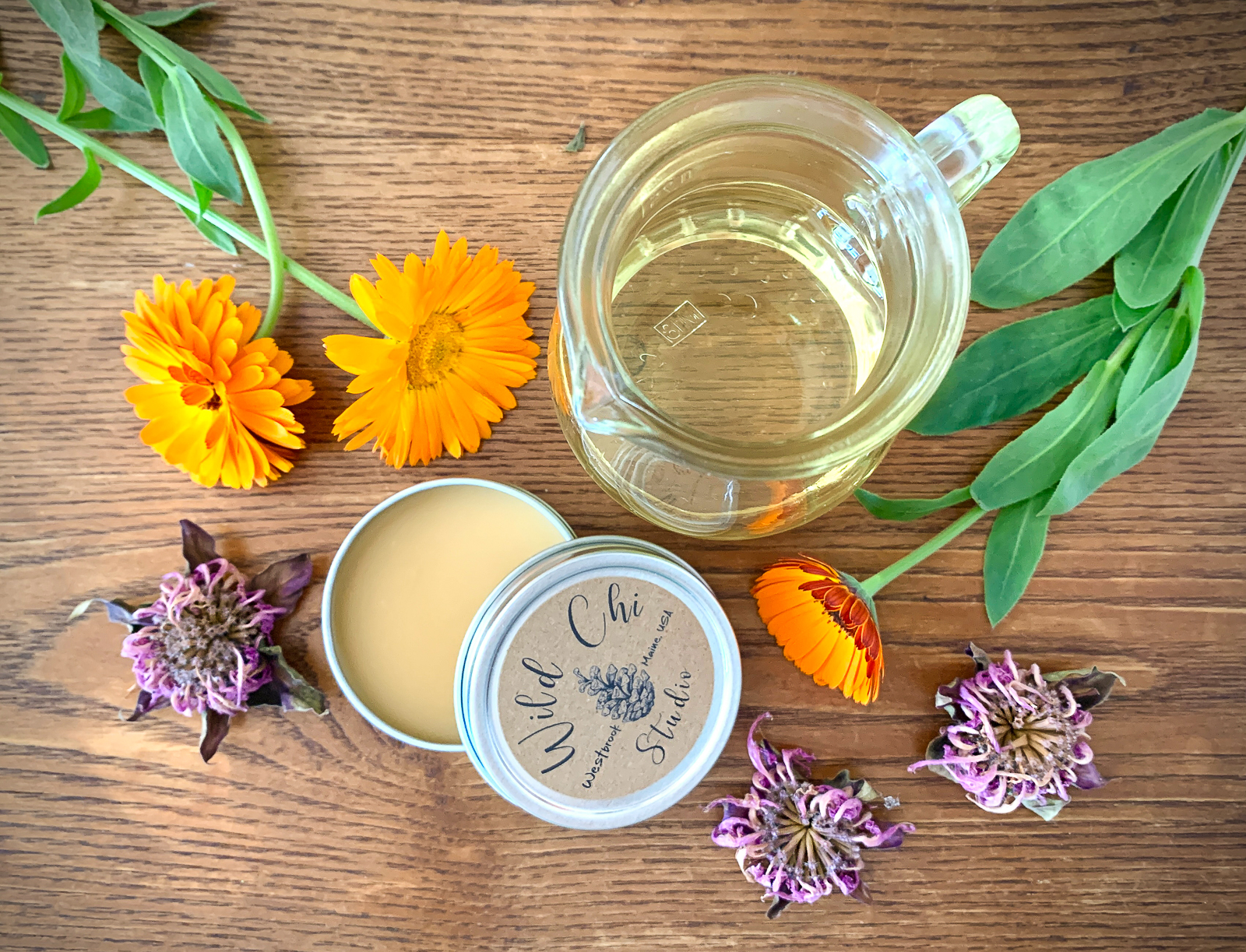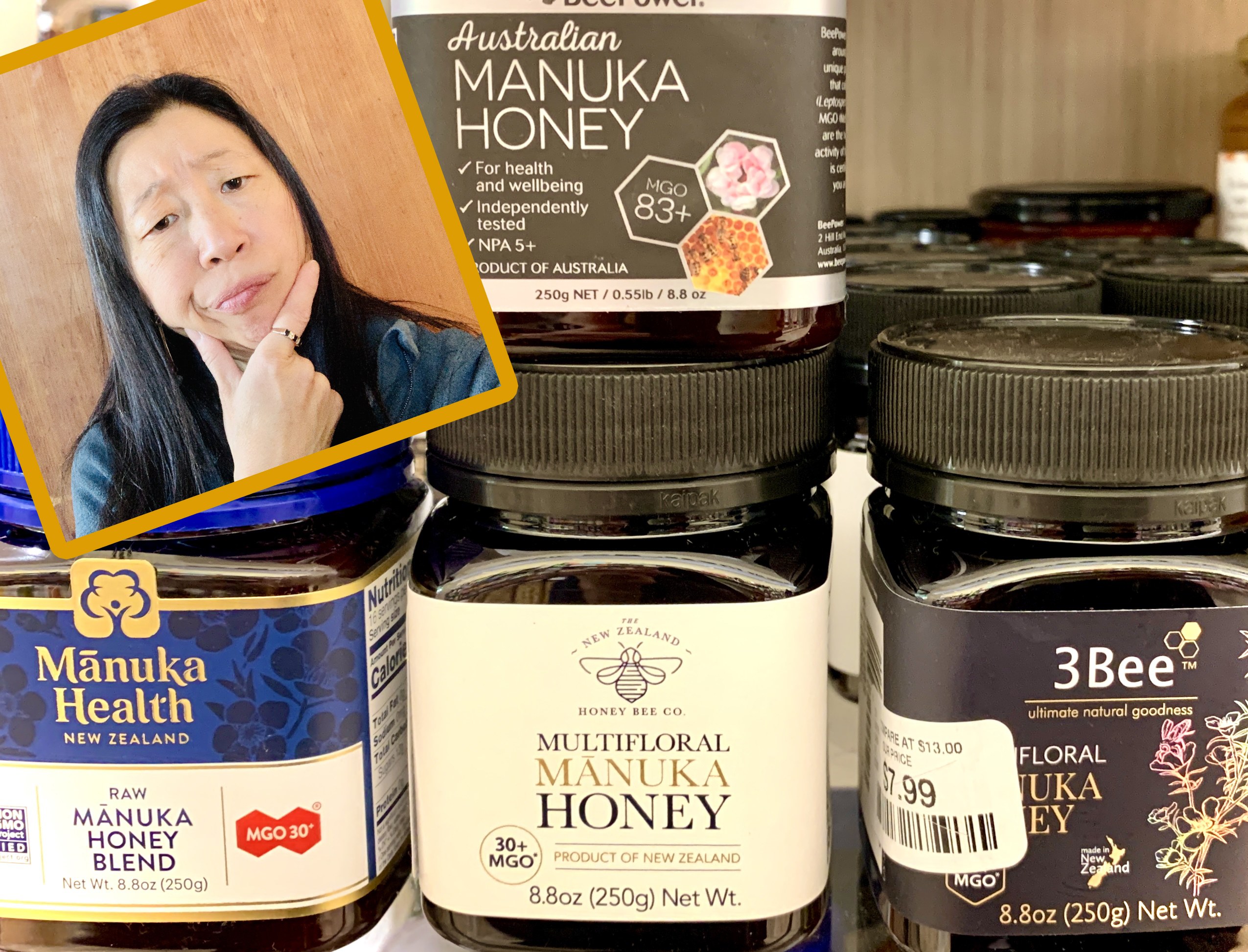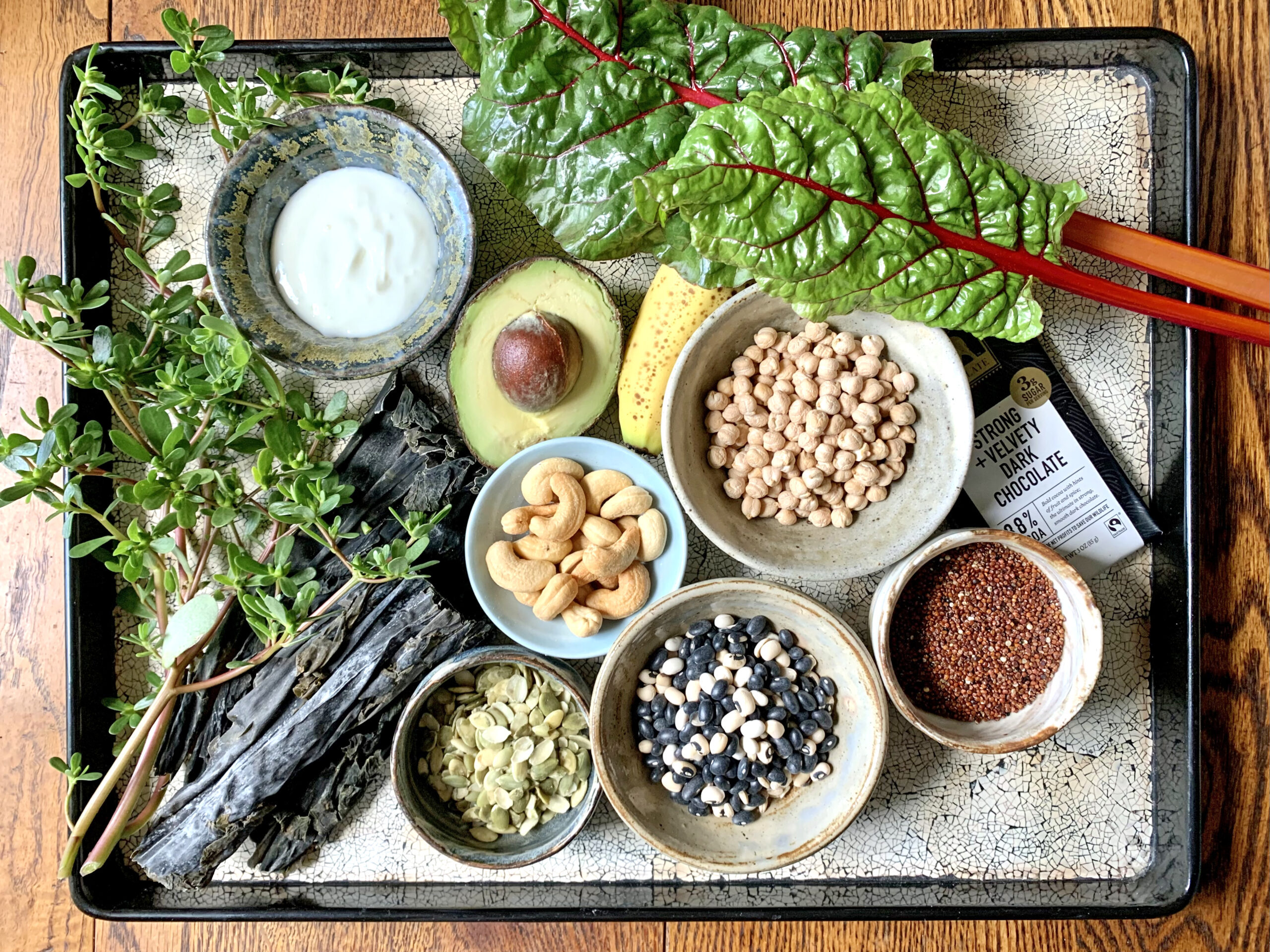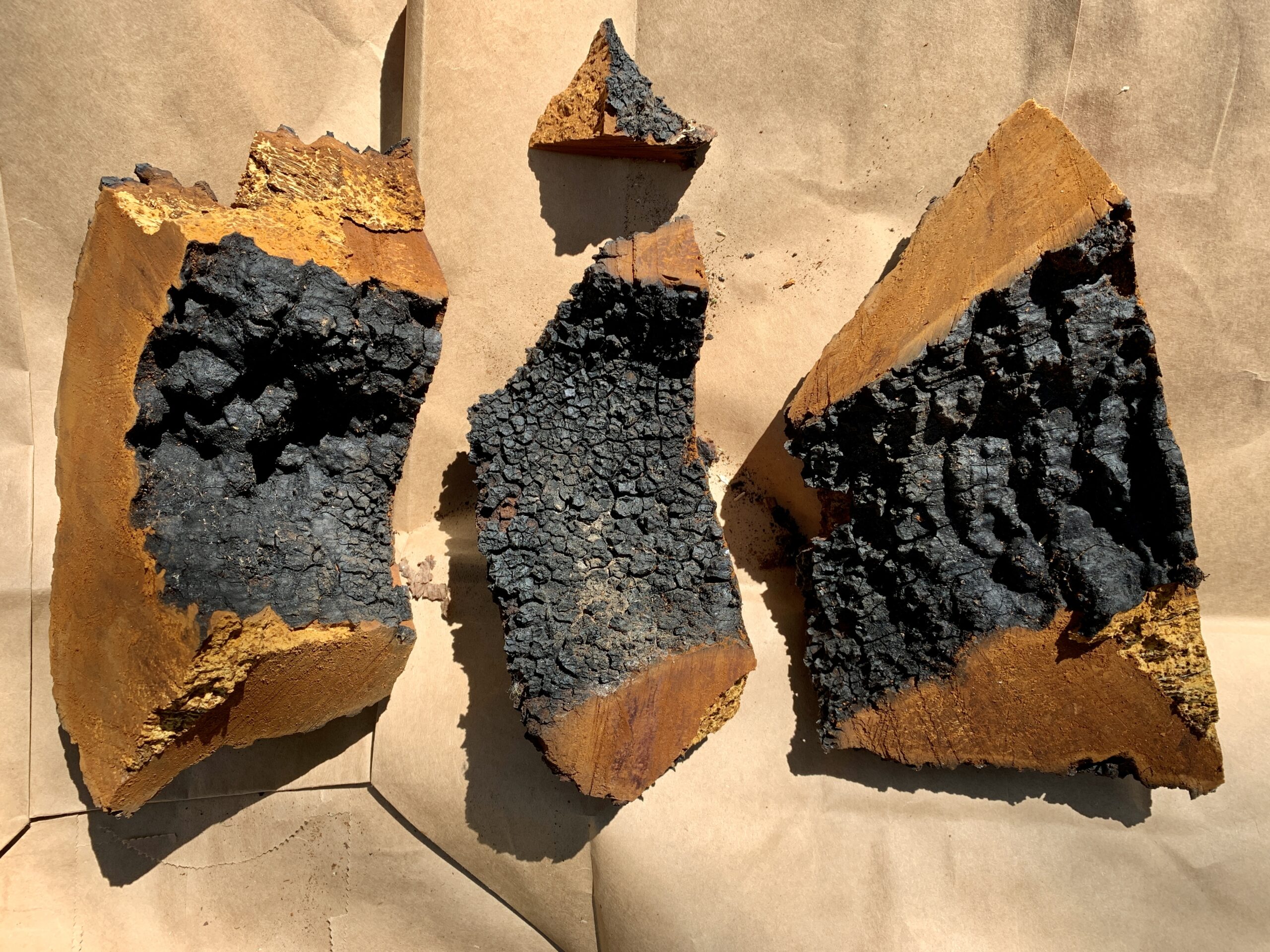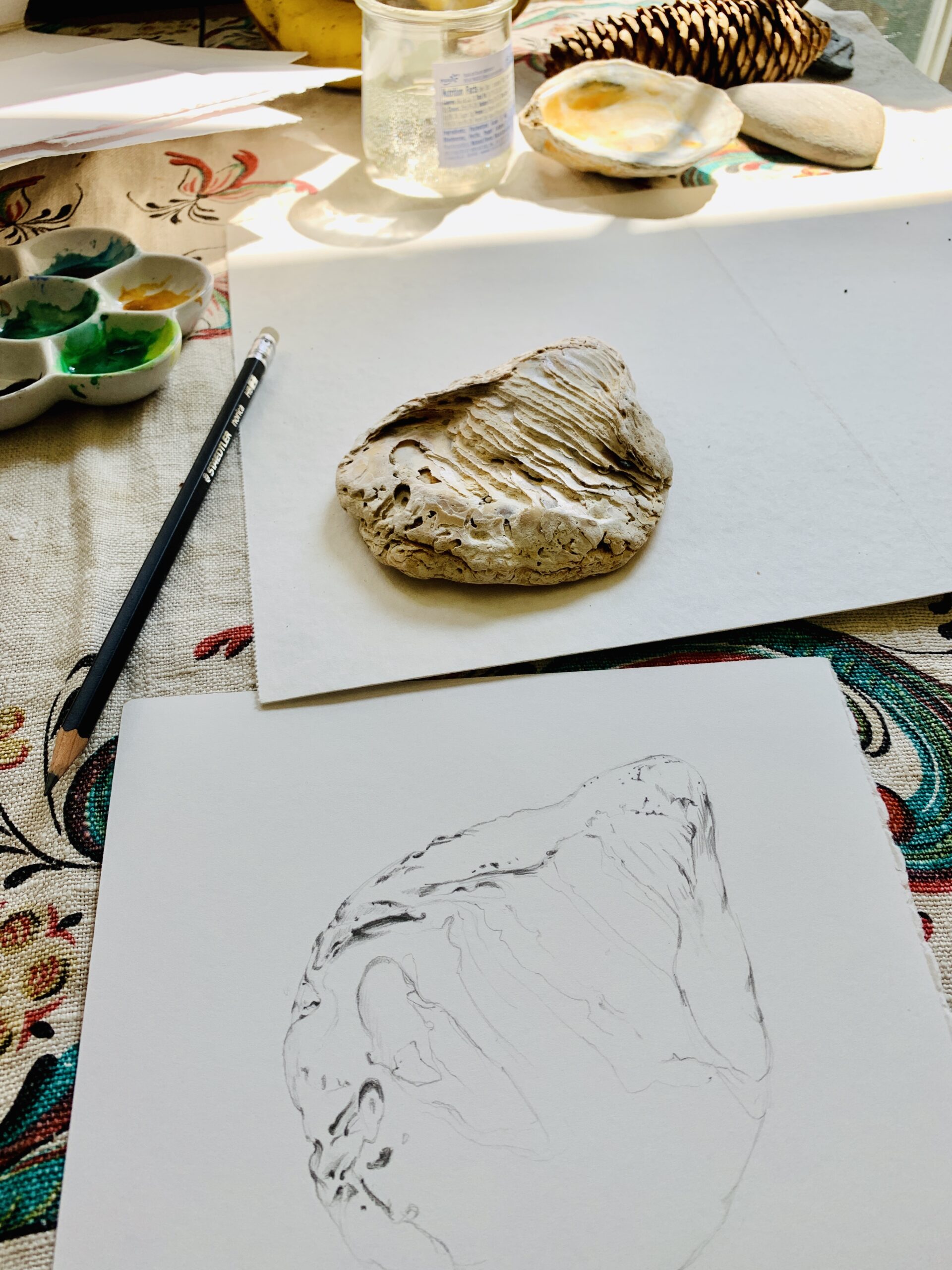Ricinus communis
Have you heard of a castor bean plant, Ricinus communis? If yes, then, have you ever seen a castor bean plant? I’m certain you have, but if not, these plants are robust, exotic-looking giants often planted in commercial, municipal and residential gardens alike, as a statement specimen. A member of the euphorbiaceae family, castor bean is a vigorous tender perennial (annual in temperate climates below zone 8) with a shrubby habit that can grow up to 40 feet high! Hold up people, in zones 4 and 5 (Maine), castor bean plants typically grow only 6 to 10 feet in a single growing season before they are killed by frost. A native to the tropical east Africa region, it has managed to put down roots throughout sub tropical locales around the world, including the American southwest. You’ll find them growing in moist but well-drained soils along roadsides, riverbeds and the margins of cultivated land.
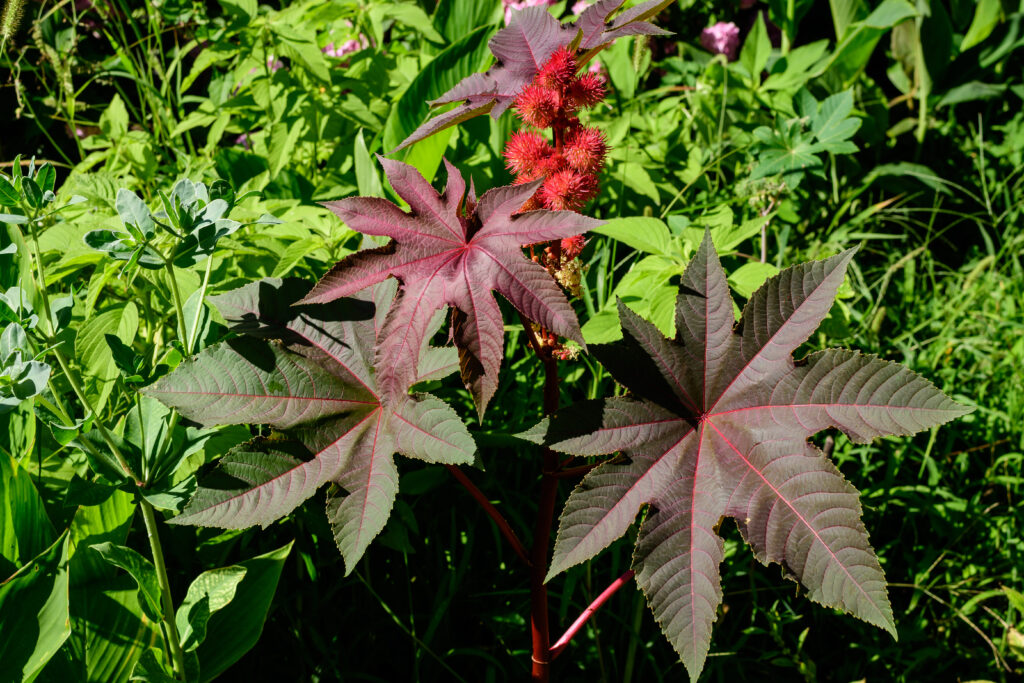
Botanical Summary
Castor bean plants are show stoppers. The leaves on these plants can grow to over 2½ feet across and display deeply incised lobes, giving the appearance of chubby green stars bobbing on long, woody stems. And if the leaves aren’t dramatic enough for you, the flowers are pretty spectacular too. The castor bean plant is known as a monoecious plant, meaning that the male and female reproductive parts are both present on each plant. Inflorescences of 8”-18” vibrant red female flowers appear at the top of stems while the inconspicuous, but pollen-laden male flowers cluster below them. Once pollen is produced and dispersed by the wind, the male flowers fade away and the spiny ovaries of the female flower develop into a fruit.
A Cautionary Word
Where there is fruit, there will be seed. Each ½-inch long seed pod contains a single seed, which is forcefully ejected when its protective carpel splits open at maturity. These seeds, which are viable up to 3 years, are shiny and speckled with a small point, called a caruncle, that assists with germination. Incidentally, the scientific name for the castor oil plant, Ricinus communis, was so named by Carolus Linnaeus because the seeds of the plant resemble an engorged tick.1 And, these seeds are very bad for you; I mean TOXIC, in the order of several thousand times more poisonous than cyanide!2 Do not let children, poultry or livestock near the plants because as few as 4 seeds can be fatal to an average sized adult. However, if you choose to grow these plants on your property, do so with extreme care, and know that it is also host to the castor butterfly (Ariadne merione) and the castor semi-looper moth (Achaea janata), and also is used as a food plant by the larvae of some other species of Lepidoptera, including Hypercompe hambletoni and the nutmeg (Discestra trifolii).3 You can cut off the flowers and dispose of them before the seed pods form. Yes, a healthy dose of fear will help to keep everyone safe.
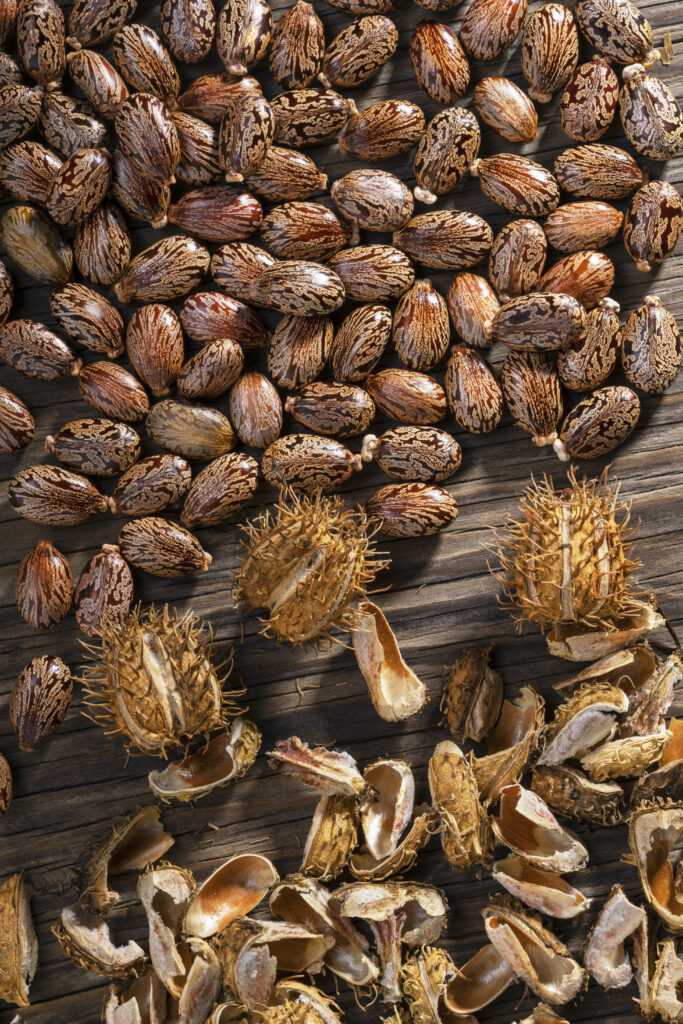
Now is a great time to remind you that the contents of this article are provided only for informational purposes and not offered as any medical claim, medical advice, treatment, cure, or prescription and I encourage you to conduct further research on anything you read here.
I would also like to take this moment to let you know that I am motivated by a deep desire to help people on their wellness journey, and otherwise. I take my responsibility as a human being to heart and feel compelled to share what I know – and especially what I don’t! But seriously, to my core, I believe that vibrant health and wellness is our birthright and we all should have access to it. My mission here at Wild Chi Studio is to explore all the different ways that wellness can be nurtured and created, not with the expense, confusion, and frustration of big pharma, but with the plant world, and then offer them. Please accept this article as yet another small step on the plant path we are walking together.
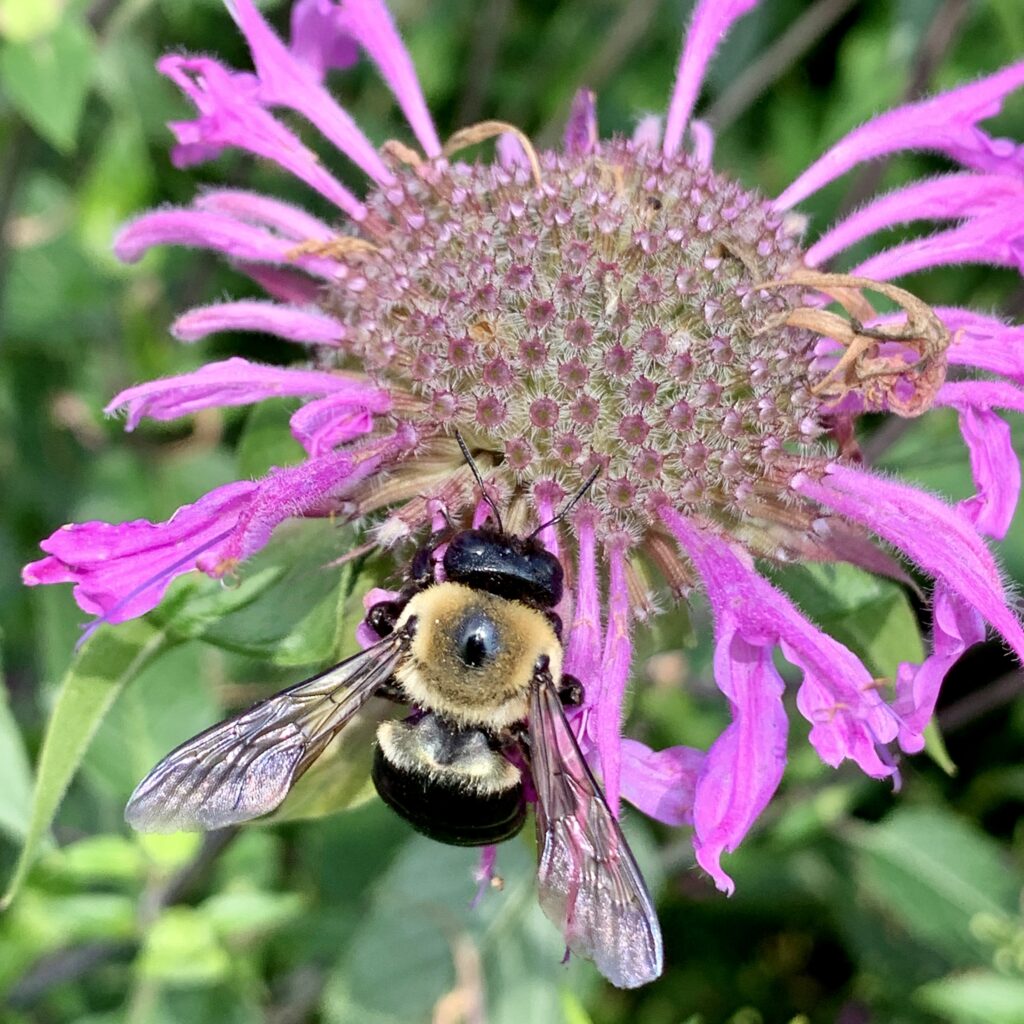
Where Does Castor Oil Come From?
Global sources primarily come from India and east African countries. Castor oil is produced much like olive oil where the seeds of the plant are cold pressed to extract its thick, odorless and slightly yellow oil. You may be thinking, “Didn’t you just say the seeds are deadly?” I did, but the toxic protein present in castor beans, known as ricin, is water soluble and remains in the seed bulk when the oil is expelled. Since ricin doesn’t occur in the oil, consumption of castor oil is not only safe for most folks but beneficial. You will, however, need to consult with your doctor to determine if it’s right for you.
What’s So Special About Castor Oil?
According to the ancient healing system of Ayurveda, castor oil provides nourishment indicated by its sweet taste, while its pungent and astringent tastes offer a cooling and clearing action on the body. Here, in the West, one of castor oil’s key therapeutic components, undecylenic acid, was first discovered in 1877, and has since been found to be an effective antifungal agent.4 Going further back in history though, as far back as circa 1550 BC, the Egyptian medical treatise, known as the Ebers papyrus, made mention of the use of castor oil as an eye protectant. Grecians have used castor oil to improve hair growth and to make body ointments. And, throughout history and cultures worldwide, castor oil has been used to stimulate labor in pregnant women.
Because castor oil is inexpensive and readily available, it is often considered a safe first line of defense against numerous conditions. Below, mentioned in alphabetical order, are some generally understood areas of benefit and you are encouraged to explore them further as they relate to your interest and needs.
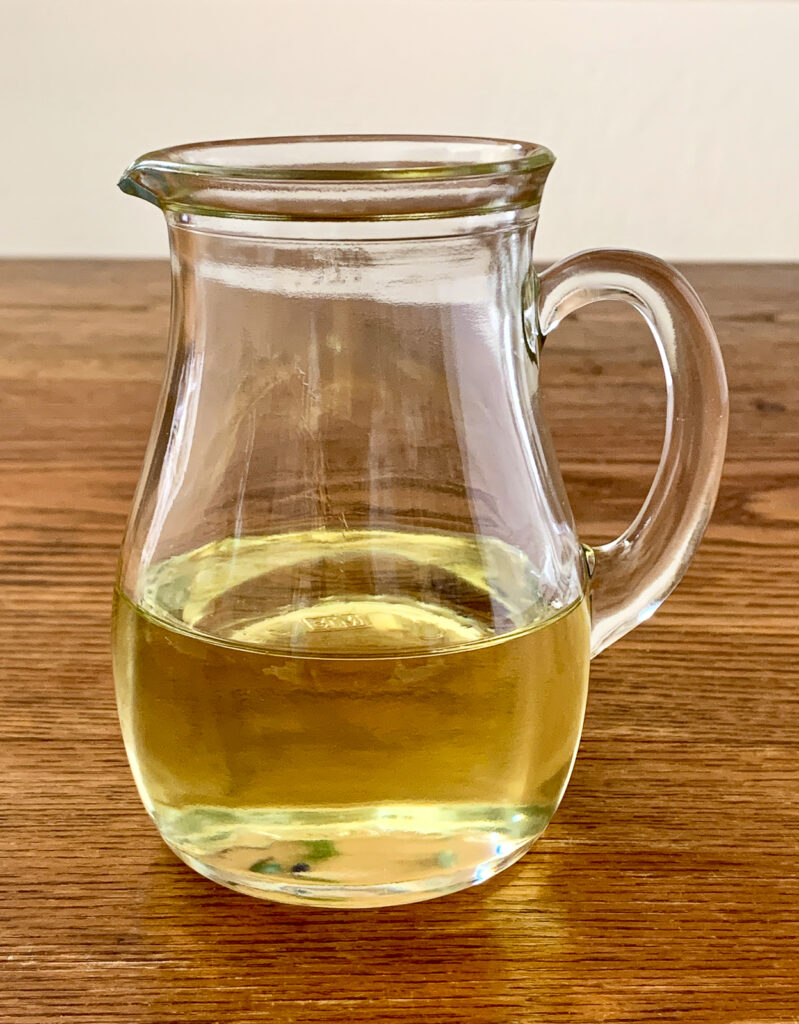
DIGESTION & ELIMINATION
Historically, before the intuitive healer of the mid 1900s, Edgar Cayce, made castor oil packs a household name and remedy, castor oil was primarily known as a strong laxative to be taken internally. Due to its stimulating properties, castor oil has enjoyed a fair amount of anecdotal evidence pointing to its efficacy in relieving constipation and improving digestion. However, before attempting this remedy on your own, it is highly recommended that you consult with your doctor, especially when using castor oil internally! When used topically, the stimulating activity on the body is more gentle and can be used to provide support for the liver and gallbladder, which are essential for proper digestion.
HAIR
In the world of personal care products, castor oil is known as a humectant that facilitates moisture retention, providing increased hydration to the hair follicles and strands. To use as a hair conditioner, diluting the castor oil with jojoba oil, at a one-to-one ratio, can greatly reduce the instance of castor oil weighing down and matting the hair. Simply massage the blended oil into hair and scalp then run a comb through to disperse evenly. Leave this on for several hours with a shower cap over hair (while you do chores or read a book), then shampoo as usual.
IMMUNITY
In collecting information for this article, the idea of immunity being obtained through the skin was quite a revelation to me and I think it speaks to how mysterious the plant world operates in relationship with humans. When applied transdermally, studies have shown that castor oil is able to stimulate the immune response by boosting prostaglandin activity and increasing T-11 lymphocytes (the white blood cells responsible for attacking invading bacteria or viruses).5 The T-cells reside in the skin, which is why topical application of castor oil is likely so effective. Wow!
LABOR INDUCTION
Women across the globe have been trusting the labor-inducing power of castor oil for millennia. Now, after some controlled studies,6 conventional medicine does recognize the use of castor oil as a safe, non-pharmacological substance for stimulating muscle contractions in the uterus for women at full-term. Much more research is needed on the administering and safety of using castor oil for this purpose but the anecdotal evidence and studies are promising. If you are a pregnant woman considering castor oil for labor induction, you must consult with your doctor.
LYMPHATIC CARE
In addition to its ability to help the body defend against pathogens and their toxins, castor oil has been shown to improve circulation which, in turn, enhances detoxification. Because lymphatic fluid comes in contact with every cell in the body, circulation of its flow is really important!7 The lymphatic system appears to respond well to the transdermal application of castor oil, to which, castor oil packs have been employed, along with a heating pad, to direct the therapy right where it’s needed. Below, you will find instructions on implementing your own castor oil pack.
NUTRITION
Nutritionally, castor oil is an excellent source of omega-6 and omega-9 fatty acids which are necessary for maintaining good heart and brain health.8 Apart from the relative unpalatability, castor oil is also a powerful laxative and is not recommended to be taken internally in large amounts or for any length of time.
PAIN RELIEF
Pain is often just describing the effect of inflammation. In this light, with its ricinoleic acid content and its ability to ease smooth muscle contraction, castor oil offers natural pain relief through its anti-inflammatory action. This rich oil can penetrate deeply into muscles and joints especially with the addition of heat. See castor oil pack instructions below.
SKIN
Historically, castor oil has been utilized for its anti-fungal and antimicrobial properties and today, in western medicine, many topical medications list undecylenic acid, present in castor oil, as the active ingredient to relieve candida related infections; think athlete’s foot, ringworm, and toenail fungus.9 And, with the fatty acids and triglycerides naturally found in castor oil, a variety of other skin ailments from cracked heels to skin tags, acne and scars can be addressed. In our household, I like to infuse castor oil with herbs such as oregano, cannabis, or calendula to fine-tune its healing potential and incorporate it into salves and ointments for easy application.
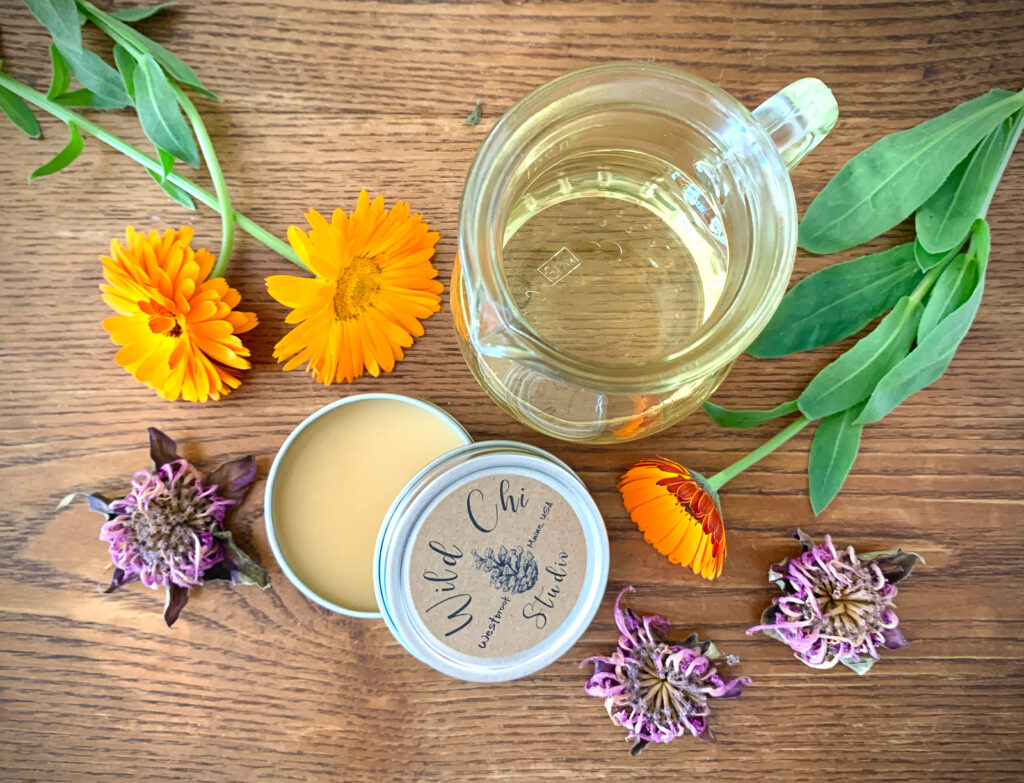
CASTOR OIL PACK: How and when to use a castor oil pack externally
First of all, as with any remedy applied onto (or into) the body, it is recommended that you consult with your healthcare team to make sure that castor oil could benefit you. And while castor oil packs are recognized as very safe for most people, pregnant women and people with acute conditions are especially cautioned.
For those who determine that using a castor oil pack will support their wellness goals, it is generally understood that (with advice from your doctor), frequent applications over a period of time are the most effective. *One other note before you put your castor oil pack together: do a patch test on an inconspicuous section of skin to make sure you aren’t sensitive to castor oil.
Ingredients/Supplies
- A 12” x 18” piece of untreated wool flannel or cotton flannel (which can be reused about 20 times due to the antimicrobial nature of castor oil)
- A few ounces of organic cold-pressed castor oil (depends on size of flannel)
- Oil cloth or clean trash bag (13-gallon capacity)
- Hot water bottle (recommended), though a heating pad is OK
- Old bath or beach towel
Instructions
- Turn heating pad on low or fill your hot water bottle.
- Fold flannel in half or into thirds to create a pad that will completely cover the affected area.
- Slowly pour castor oil onto the flannel, starting in the center and working out to the edges. Once the oil has saturated the cloth, fold in the edges, pressing and working the oil further into the flannel. You want enough oil to fully soak the cloth without any drips.
- Place oilcloth (or trash bag) on heating pad, then lay the castor oil-soaked flannel on the oilcloth.
- Fold the whole assembly in half like a taco so the heating pad is on the outside, warming up the flannel inside. Let this warm up for about a half an hour. If using a hot water bottle, place bottle on top of oil cloth and wrap the whole assembly in an old towel to warm up.
- Lay a towel on the surface you are resting on to catch any oil drips.
- When ready to apply the flannel, carefully lay the oil-soaked cloth directly onto the affected area and add the other layers; oilcloth, heating pad, and finally another towel to hold in the heat.
- Relax for at least an hour while the castor oil absorbs into your skin. This is a good time to meditate, catch up on reading, or simply rest.
- When finished, roll up oil-soaked flannel and store in a glass jar for later use. This can be reused multiple times (20+ times).
- Following treatment, wipe excess castor oil off with a solution of water mixed with 1-2 tablespoons of baking soda. This is a sticky oil and will stain clothing and furniture!
- To store, simply fold up the saturated flannel and place in a glass jar with a lid. Keep in a cabinet with the heating pad and other castor pack supplies. Or, for longer term storage, you can store the cloth in the fridge.
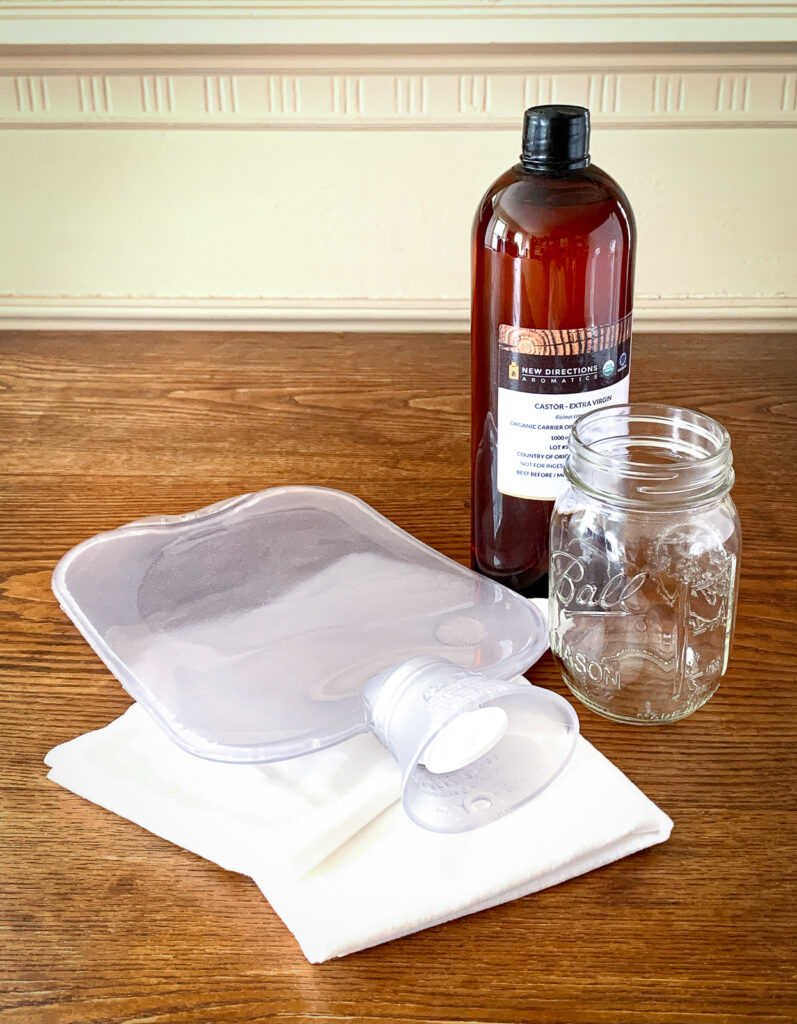
If you made it this far, you may have forgotten that this content is provided only for informational purposes and not offered as any medical claim, medical advice, treatment, cure, or prescription and I encourage you to conduct further research on anything you read here. Furthermore, while castor oil is well studied and shows much promise, much of the information presented is anecdotal and requires further, more rigorous inquiry.
Thanks so much for following along with me. Castor oil has a lot to offer and I would love to know how you work with it along your wellness journey!
-To your health,
Abby
SOURCES
1. New World Encyclopedia. Castor Oil Plant. Accessed October 10, 2021.
2. Department of Animal Sciences – Plants Poisonous to Livestock. Ricin Toxin from Castor Bean Plant, Ricinus communis. Cornell CALS. Accessed October 10, 2021.
3. Castor Oil Plant New World Encyclopedia. Accessed October 10, 2021.
4. National Institutes of Health. Undecylenic Acid Compound Summary, National Library of Medicine. Accessed October 10, 2021.
5. Grady, Harvey. Immunomodulation Through Castor Oil Packs. Journal of Naturopathic Medicine, Pg. 87. Accessed October 10, 2021.
6. Neri, Isabella. Dante, Giulia. Pignatti, Lucrezia. Salvioli, Chiara. Facchinetti, Fabio. Observational Study, Castor oil for induction of labour: a retrospective study. National Library of Medicine, Published June 15, 2017, accessed October 10, 2021.
7. Douketis, James. D. MD. Overview of the Lymphatic System. Merck Manual Consumer Version. McMaster University, November 2020.
8. Robertson, Ruairi, PhD, Medically reviewed by Richter, Amy, RD. Omega -3-6-9 Fatty Acids: A Complete Overview, Healthline, Nutrition. October 22, 2020.
9. Richards, Lisa, CNC, Reviewed by Stone, Katie, ND. Undecylenic Acid: Benefits for Candida Overgrowth. The Candida Diet, August 29, 2021.

